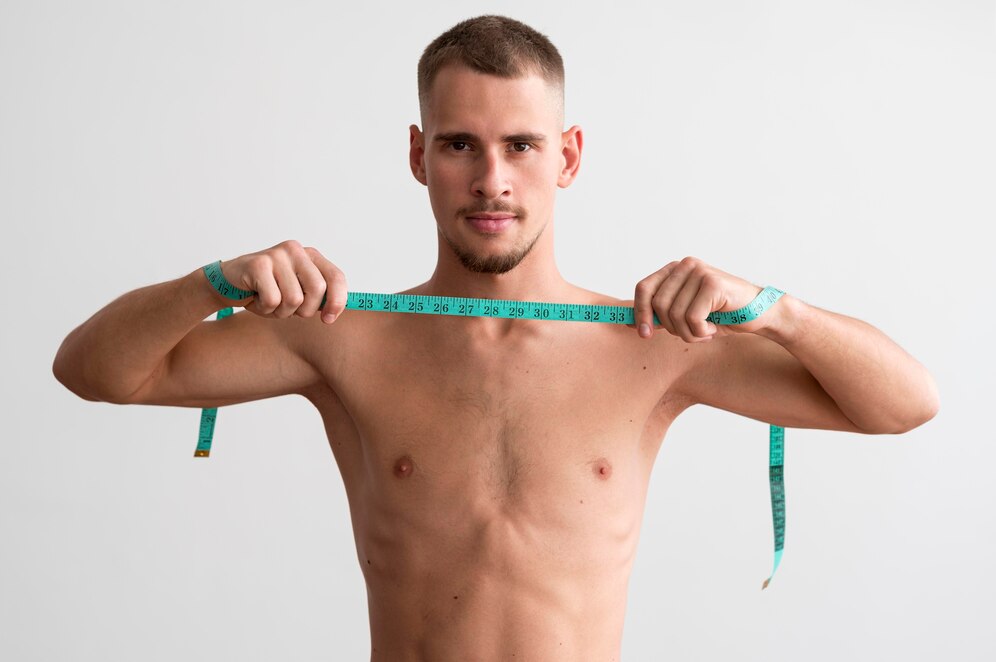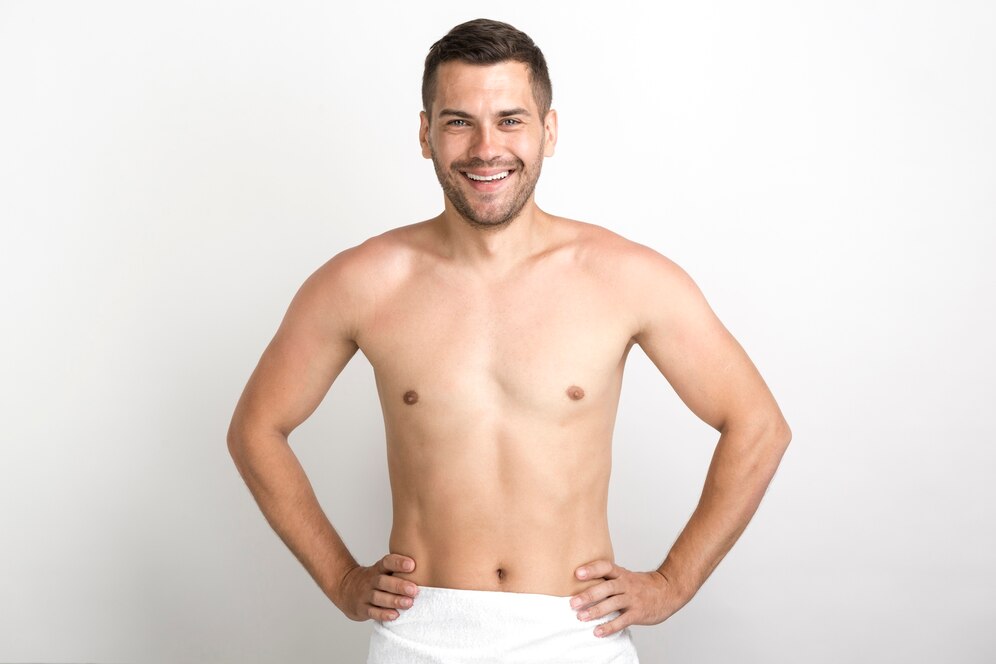Gynecomastia Treatment Without Surgery: What Really Works?
Gynecomastia, or “man boobs,” is a condition where male breast tissue is enlarged. The condition can lead to emotional distress and self-consciousness. While surgical intervention is a definitive solution, many individuals seek gynecomastia treatment without surgery as a preferred option.
At Karishma Cosmetic Clinic in Pune, we understand the importance of offering diverse treatment options tailored to individual needs. This guide explores various non-surgical treatments for gynecomastia.
Understanding Gynecomastia
Gynecomastia happens due to a hormonal imbalance between estrogen and testosterone levels, which causes the growth of breast gland tissue in males. Factors contributing to this hormonal imbalance include:
Puberty: Hormonal fluctuations during adolescence can cause temporary gynecomastia.
Medications: Gynecomastia can be caused by some drugs, including anabolic steroids, anti-androgens, and antidepressants.
Health conditions: Liver disease, kidney failure, and hyperthyroidism can influence hormone levels.
Substance use: Alcohol, marijuana, and other recreational drugs have been linked with gynecomastia.
Understanding the primary cause is crucial for effective treatment.

Gynecomastia treatment without surgery: Non-surgical treatment options
1. Lifestyle modifications
- Dietary changes: Following a balanced diet that is high in lean proteins, whole grains, fruits, and vegetables can help control weight and hormonal balance. Foods high in zinc, such as oysters, may boost testosterone levels. Conversely, limiting soy products and processed foods can help reduce estrogen-like compounds in the body.
- Exercise: Regular physical activity, including cardiovascular exercises and strength training, can reduce overall body fat and improve chest muscle tone. Specific chest exercises such as push-ups and bench presses can improve the shape of the chest region.
- Weight management: Maintaining healthy weight can reduce fat stores in the chest, which may minimize the visibility of gynecomastia.
2. Compression garments:
Compression shirts or vests are designed to flatten the chest area, providing a more contoured appearance. While they don’t treat the underlying condition, they offer a non-invasive way to manage its appearance, boosting confidence in daily activities.
While non-surgical approaches such as lifestyle modifications and compression garments can offer visible improvement, they may not always address the root cause of gynecomastia, especially in cases involving glandular tissue enlargement rather than just fat accumulation. If you’ve been consistent with these methods but still experience persistent male breast enlargement or discomfort, it may be time to consider a more definitive solution.
Also Read – Understanding the Difference Between Gynecomastia and Chest Fat
Gynecomastia surgery at Karisma Cosmetics
Male breast reduction surgery, identified as gynecomastia surgery, is performed to eliminate excess fat and glandular tissue from the chest, offering a more sculpted and masculine look.
Depending on the complexity of the procedure and patient preference, the surgery is performed under either local or general anesthesia. At Karisma Cosmetics, the surgery generally involves one or both of the following techniques:
- Liposuction – When excess fat is the primary cause, a small cannula (thin, hollow tube) is inserted through tiny, strategically placed incisions. The surgeon uses this cannula to gently suction out the unwanted fat from the chest area, helping to redefine the chest shape.

- Glandular tissue excision – If firm glandular tissue is present, it cannot be removed by liposuction alone. In such cases, the surgeon carefully excises the glandular tissue, usually through a small incision around the lower edge of the areola.
This step is crucial for treating true gynecomastia. Both methods may be combined for optimal results. The procedure is generally safe, and most patients experience a quick recovery with minimal scarring and long-lasting outcomes.
Importance of medical consultation before considering any gynecomastia treatment without surgery
Before pursuing any gynecomastia treatment without surgery, it’s vital to consult with a healthcare provider to:
- Determine the underlying cause of gynecomastia.
- Rule out other medical conditions.
Discuss the most well-suited gynecomastia treatment without surgery options based on individual circumstances.
Karishma Cosmetic Clinic: Your partner in Gynecomastia Management
At Karishma Cosmetic Clinic in Pune, we prioritize patient-centered care. Our staff of skilled professionals provides thorough assessments to identify the best course of gynecomastia treatment without surgery for every patient.
Whether you’re considering lifestyle changes, non-invasive procedures, or exploring surgical options, we’re here to guide you every step of the way.
Gynecomastia can affect self-esteem and overall quality of life, but there are many non-surgical treatments that can help control this condition. By knowing the root causes and looking at all the available options for treatment, individuals can make sound decisions regarding their well-being.
We’re dedicated to giving you individualized care to realize your desired results at Karishma Cosmetic Clinic.
Book an appointment now.
Frequently Asked Questions
Yes, gynecomastia can go away on its own, especially during puberty, as hormone levels balance. In adults, it may resolve with lifestyle changes, medication adjustments, or weight loss. For those seeking gynecomastia treatment without surgery, persistent cases may still require medical evaluation to explore non-surgical options before considering surgery.
If gynecomastia is left untreated, it may persist or worsen over time, causing emotional distress, self-consciousness, and social anxiety. It can sometimes lead to tenderness or pain but rarely poses serious health risks.
Yes, you can recover from gynecomastia. Treatment may range from changes in diet and exercise to medications or, in some cases, surgery. Most individuals achieve a flatter, more masculine chest and improved self-confidence with proper medical care and post-treatment follow-up.
Increasing testosterone may help reduce gynecomastia if caused by low testosterone levels, but it’s not always effective. Gynecomastia may be caused by shifts in hormone levels, drug side effects, or underlying health conditions, making medical assessment crucial for accurate diagnosis and care.
Yes, mild gynecomastia can sometimes be reduced without surgery through weight loss, hormone therapy, or medication. However, gynecomastia treatment without surgery may not be effective for significant glandular tissue, which often requires surgical removal for long-lasting results. Always consult a specialist for personalized treatment.
Gynecomastia in men is treated based on its cause. Options include lifestyle changes, hormone therapy, or medications. When gynecomastia does not resolve on its own, surgical breast reduction is the most reliable treatment to restore a firm, contoured chest.
Gynecomastia is generally harmless in terms of physical health, but it can impact confidence and cause emotional strain. Occasionally, it may be a sign of an underlying hormonal or medical issue that should be assessed by a doctor.
Diagnosis of gynecomastia typically involves a physical exam of the chest area. Blood tests and imaging studies, including ultrasound or mammogram, may also be conducted to assess hormone levels and rule out other issues such as tumors or lipomas.
You should worry about gynecomastia if the swelling is painful, continues to grow, affects only one side, or persists beyond two years. Sudden changes, discharge, or a firm lump should prompt immediate medical evaluation to rule out underlying issues.
Gynecomastia can be painful to touch, especially during its early stages. The tenderness is often due to hormonal changes causing breast tissue growth and inflammation. However, the severity of pain varies from person to person and may subside over time.
Foods rich in zinc, omega-3 fatty acids, and antioxidants, such as cruciferous vegetables, green tea, fatty fish, and nuts, may help reduce gynecomastia. These support hormone balance and reduce estrogen, potentially minimizing male breast enlargement naturally.
Gynecomastia (gyno) may be permanent or temporary, depending on its cause. Hormonal changes, medications, or underlying health issues can trigger it. Surgery is often required for permanent correction in persistent cases, especially with glandular tissue.
Gynecomastia itself doesn’t directly affect the heart. However, underlying causes like hormonal imbalances, liver disease, or certain medications might impact heart health. Evaluating and treating root conditions contributing to gynecomastia is essential for overall well-being.
Due to anesthesia, gyno surgery is typically not painful during the procedure. However, post-surgery, patients may experience mild to moderate discomfort, swelling, or soreness, which is manageable with prescribed pain medications and usually improves within a few days.
Yes, gynecomastia can return after treatment, primarily if the underlying cause isn’t addressed. Hormonal imbalances, certain medications, weight gain, or steroid use can trigger recurrence, making ongoing lifestyle management and medical monitoring critical after surgery, therapy, or gynecomastia treatment without surgery.
Yes, gynecomastia can be common in athletes, especially those using anabolic steroids or supplements that affect hormone levels. Hormonal imbalances, intense training, and certain medications may also contribute to its development in otherwise healthy male athletes.
To prevent gynecomastia from worsening, avoid high-fat processed foods, soy products, dairy with added hormones, alcohol, and foods high in sugar. These can disrupt hormonal balance and increase estrogen levels, potentially aggravating the condition. Such dietary changes can support gynecomastia treatment without surgery by helping manage hormone levels naturally.
True gynecomastia involves firm, glandular tissue under the nipple, often tender to touch. Chest fat feels soft and spreads more evenly. A physical exam or ultrasound by a doctor can confirm the difference accurately. For those seeking gynecomastia treatment without surgery, medical evaluation helps determine the right approach.



